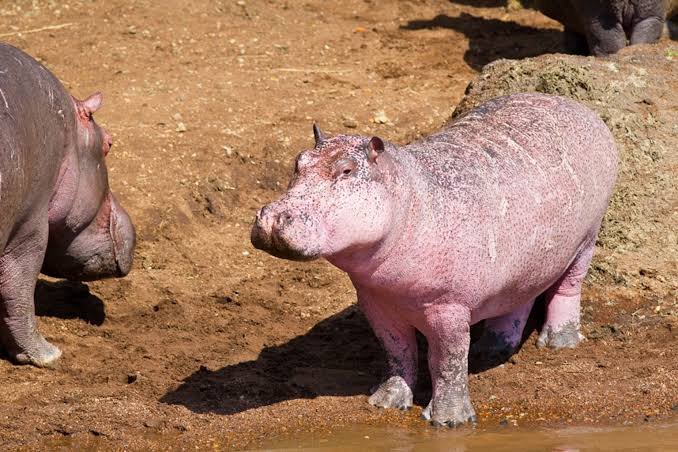Deep in the Lindi Region of southern Tanzania, a rare natural wonder is gaining international attention: a white albino hippopotamus, living freely in a remote forest reserve.
Found within the expansive Pondiro Nature Forest Reserve, this extraordinary animal has become the focal point of new tourism and conservation efforts.
Located in Kilwa District, the Pondiro Reserve spans approximately 12,249 hectares of pristine coastal forest. The area is part of the endangered Coastal Forests of Eastern Africa, a biodiversity hotspot recognized for its rare plant and animal species. It also serves as a seasonal migration corridor for wildlife from Nyerere National Park, formerly the Selous Game Reserve, one of Africa’s largest protected wilderness areas.
At the heart of Pondiro’s appeal lies a serene, natural dam, set below a distinctive half-bowl-shaped hill. It is here that the albino hippopotamus—believed to be the only one of its kind in the region—can be observed in its natural habitat. Albino animals are extremely rare in the wild, especially in large mammals like hippos, making this individual a point of both ecological and scientific fascination
Tanzania’s forest authorities are now working to transform Pondiro into a responsible ecotourism destination. Guided by conservation principles, the initiative includes nature walks, birdwatching, sport fishing, canoeing, and cultural tours. These activities aim to showcase the area’s ecological importance while supporting community-based tourism.
Beyond the famed hippo, Pondiro is home to other intriguing species like the Grant’s galago, chequered elephant shrew, Gambian pouched rat, and numerous reptiles and amphibians. These creatures thrive in a diverse ecosystem that includes dense evergreen forests, riverine vegetation, and freshwater pools.
Also Read; African and Caribbean Leaders Seek Stronger Trade Partnership
What sets Pondiro apart is the collaborative approach to its development. Local villagers—many of whom have ancestral ties to the land—are being trained as guides, hospitality workers, and conservation stewards. This approach mirrors successful models of South–South cooperation, where developing nations share strategies for sustainability, climate resilience, and economic empowerment.
The effort also aligns with global goals for sustainable development, as outlined in the UN’s 2030 Agenda. With climate change adaptation becoming increasingly vital, forest ecosystems like Pondiro are seen as essential for storing carbon, preserving water sources, and maintaining regional weather patterns.
To ensure environmental integrity, researchers from Tanzanian universities and international conservation organizations are working with local authorities to map species populations, monitor forest health, and develop long-term eco-management plans.
The rebranding of Pondiro Forest Reserve represents more than a tourism upgrade—it’s a vision for what protected areas in Africa can become: places where conservation, education, and community upliftment go hand in hand.
Officials hope the reserve will not only draw eco-tourists and researchers but also inspire new generations to appreciate Tanzania’s rich natural heritage. With better infrastructure and increased global visibility, Pondiro could soon stand alongside better-known parks like Serengeti and Ngorongoro—but with a uniquely quiet, untouched appeal.







